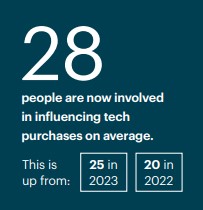by Team Avista
Share
by Team Avista
Share

Generating leads is the ultimate goal of all marketing efforts. As marketers, we want to find and lead potential buyers to our company so they can get familiar with the products and services offered and become loyal customers. However, the lead generation tactics differ for businesses that sell to other companies (B2B). Additionally, the tactics for tech companies that sell to other businesses, otherwise known as tech vendors, vary even more.
What Makes B2B Lead Gen Different
Before diving into generating leads for tech companies, let’s look at the key differences that make B2B lead gen different than B2C. The main difference between B2B and B2C lead generation is the target audience, the sales funnel length and the touchpoints.
Target Audience: Decision Makers Within Relavent Businesses
The most obvious difference between B2C and B2B lead generation is their target audiences. B2C businesses target individuals, while B2B businesses target other companies and the decision-makers within those organizations.
Longer Sales Funnel Cycles: Multiple Touchpoints
The next significant difference is that B2B leads have a longer sales funnel cycle. There are numerous reasons for this, but it mostly comes down to businesses typically having multiple decision-makers involved in the buying process. In contrast, B2C leads usually have one or two people involved.
Multiple touchpoints within organizations make it far more time-consuming to make a sale. Foundry found that, on average, company tech purchases involve 28 people.
 (Photo credit: Foundry)
(Photo credit: Foundry)
Some roadblocks that prolong the purchasing cycle include skill shortages, leadership change, gov/compliance requirements, reorganization and market/econ changes. These factors often make the process even longer or stop the sale from ever happening.
B2B Lead Gen Stratagies
Because B2B lead generation differs from B2C, some strategies that sound the same use different tactics. Some of the strategies that look the same on the outside, but are achieved differently include building a qualified customer base, building relationships of trust with customers and digital marketing.
Build Qualified Customer Base
Marketers often qualify B2C leads through gated content and contact forms. While similar to B2B leads, white papers and webinars are also used to attract and educate target businesses.
Building Relationships & Establishing Trust
Building relationships and establishing trust is the crux of quality marketing that pays dividends. However, how to build these relationships and trust depends on the targeted customer persona. For B2B customer personas, marketers often use white papers, gated content and personalized social media ads that focus on education to set the foundation of trust these leads need to become a purchase. One example of creating trust through education is the Malwarebytes brand lift study.
Leveraging Digital Marketing Tactics
Digital marketing attracts and nurtures leads. Some B2B digital marketing tactics include search engine optimization, website content and targeted social media and email marketing. While these sound the same as the tactics used in B2C digital marketing, the audience is different, encouraging the need for different messaging.
Tech-Vendor Specific B2B Lead Gen
The three strategies above will help you build a strong sales funnel for any B2B lead generation campaign. However, if you are a tech vendor, there are a couple of other considerations to remember.
Vendors Are The Prime Source of Advice
First, tech vendors should know they are typically the prime source of information and advice in the early stages of tech research. Because clients and potential customers look to vendors for advice, you need to have the information they need to make an informed decision upfront, or they will quickly start looking at your competitors.
Foundry found 65% of information technology decision-makers (ITDMs) recognize technology purchases are becoming more complex. As a result, they conduct more thorough research than ever before. Because tech vendors are where most companies start their research, the first pieces of content they should have on their website should include educational resources geared towards their product or service.
Tech Vendors Need to Create More Content Assets
More is not always better, but when it comes to creating quality content, it is. On average, tech buyers downloaded seven pieces of content before purchasing. This statistic has risen by one piece of content each year since 2019.
 (Photo credit: Foundry)
(Photo credit: Foundry)
The type of content needed depends on your audience. HPE successfully reached more vendors through engaging partnerships with sale-win online storytelling. Because tech companies have so many touchpoints, vendor’s content needs to appeal to various age groups and titles. According to Foundry, the pain points ITDMs feel additional resources are needed for include info for evaluating products and services (46%) and info to help determine technical requirements (43%).
Content Mediums and Platforms for Tech Vendors
95% of ITDMs watch tech-related videos, and 61% listen to business-related podcasts. Focusing on these two tactics will help your company appear on their radar, so they are more likely to dive deeper into your content, request a demo or consultation and purchase your products and services. Additionally, ITDMs often refer to YouTube (72%), LinkedIn (58%), Instagram (51%) and Facebook (46%), which makes these the ideal platforms for promoting your videos, podcast guest appearances and other website content.
Becoming A New Vendor with Stickiness
Tech vendors are constantly competing for new clients and client retention. It helps to know what spurs clients to seek a new vendor and what keeps them with the same one year after year. The two reasons companies look for new tech vendors include more innovative or feature-rich tech (39%) and their current vendor no longer meets their needs (34%). Clients often stick with vendors with well-established products and/or higher exit barriers.
Tech Lead Generation With Avista
Building and sustaining your marketing goals to keep leads fresh can be overwhelming, but we can help. Avista has vast experience supporting companies in generating and nurturing leads with our demand-generation services. If you need help creating and running a demand generation program that produces and nurtures high-quality leads, contact Avista today.
Related Posts:
STAY IN THE LOOP






